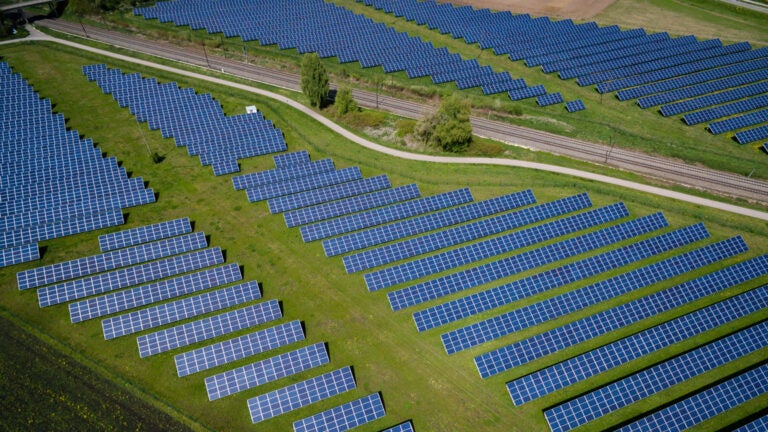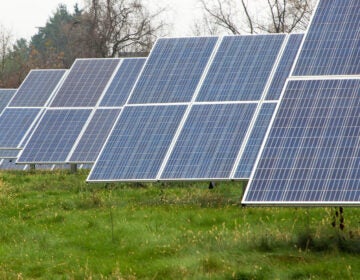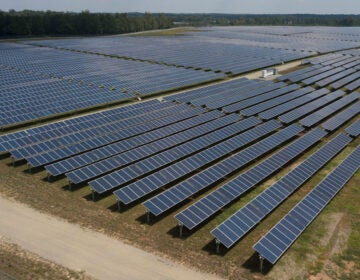No fix in sight for dispute over opening N.J. farmland to large solar projects
Solar developers say it’s the way to meet clean-energy goals. Critics say it would hurt Garden State agriculture.

Solar panels are pictured on farmland in this file photo. (Andreas Gucklhorn/Unsplash)
This story originally appeared on NJ Spotlight.
___
Lawmakers have yet to resolve a case of competing environmental priorities: preserving farmland and forests or sacrificing some of them to bolster the state’s aggressive renewable energy goals.
The dilemma landed back before the Senate Environment and Energy Committee last week over an issue that has pitted clean-energy advocates and solar developers against land preservation proponents with both sides still seemingly far from reaching a consensus.
The panel approved the bill this past August, but Sen. Bob Smith (D-Middlesex), the committee chairman, asked to reconsider it when there was no consensus for moving it further.
The dispute is being driven by the Murphy administration’s Energy Master Plan, a blueprint for transitioning to 100% clean energy by 2050. To help achieve that goal, it forecasts roughly one-third (34%) of New Jersey’s electricity will be generated by solar panels by mid-century. Solar power now accounts for approximately 5% of its electricity generation.
Backers of clean energy argue the only way the nation’s most densely populated state will meet that goal is if it opens some of New Jersey’s remaining farmland to large-scale utility-grid-scale projects. Not only would such larger projects help advance the state’s solar policy goals but do so at a cheaper cost to utility customers, advocates said.
But such projects typically require large tracts of land, ranging in size from 250 to 900 acres, according to Tim Daniels, a co-founder of Dakota Power, a developer seeking to build a utility-scale project on 800 acres of farmland in Pilesgrove. The project would allow for sheep-grazing to continue on the site.
Income for landowners
“It is really critical to develop utility-scale solar,’’ said Bruce Burcat, executive director of the Mid-Atlantic Renewable Energy Coalition. If such facilities were placed on farms, that could provide substantial income to landowners, including those struggling to keep operating, he said.
Smith agrees it will be impossible to achieve the administration’s target for solar energy. “There is just not enough room. This a classic case of competing environmental goals,’’ he said, describing it as a very tough choice.
Others, however, criticized the proposal, saying some of New Jersey’s farmland with so-called prime or statewide significant soil within county Agricultural Development Areas should be declared off-limits to development of utility-scale solar projects.
“These are the farmlands most critical to New Jersey’s future agricultural viability and they should be producing food, not energy,’’ said Tom Gilbert, of the New Jersey Conservation Foundation.
Gilbert argued the state should target parking lots; residential, commercial and industrial rooftops; and marginal open spaces for increased solar panels — all of which would provide plenty of opportunities to achieve the state’s solar goals.
“We have more than enough capacity without solar on open lands and we certainly don’t have to cover our most productive soils, or clear our forests to meet our solar goals,’’ Gilbert said.
Jenifer Coffey, executive director of the Association of New Jersey Environmental Commissions, also urged the state to be wary of impairing New Jersey’s image as the Garden State. “We have to take the approach of ‘Do no harm,’’’ she said.
WHYY is your source for fact-based, in-depth journalism and information. As a nonprofit organization, we rely on financial support from readers like you. Please give today.






